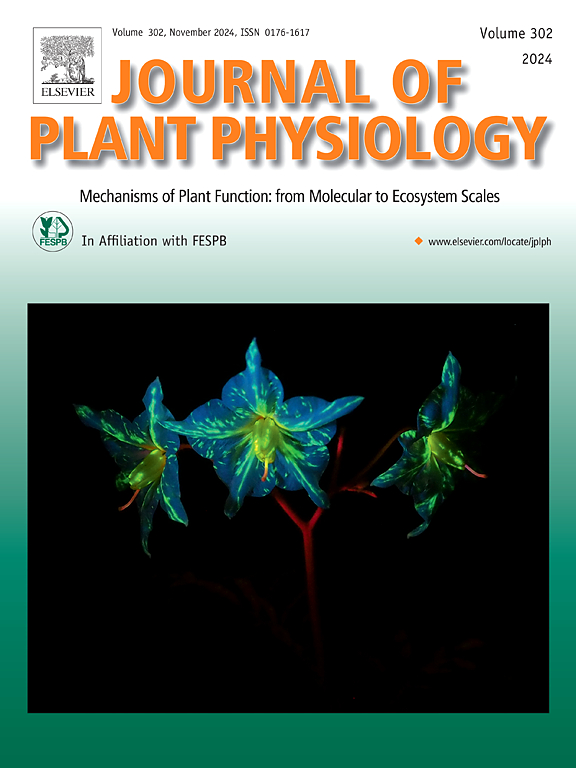Selection and validation of reference genes for quantitative real-time PCR analysis across tissues at different developmental stages in Taraxacum kok-saghyz
IF 4.1
3区 生物学
Q1 PLANT SCIENCES
引用次数: 0
Abstract
Quantitative real-time polymerase chain reaction (qRT-PCR) is a highly sensitive and widely used method for analyzing gene expression profiles. Accurate qRT-PCR normalization requires the identification of stable reference genes under specific experimental conditions. Although seven reference genes have been used in Taraxacum kok-saghyz (TKS), an alternative natural rubber-producing crop, a systematic identification of reliable internal references for gene expression analysis across tissues at distinct developmental stages of TKS has not been conducted. In this study, we screened 12 candidate reference genes (CRGs) based on RNA-seq data from 26 TKS samples, representing five tissue types and nine developmental stages. The expression levels of the 12 CRGs, along with 7 previously reported reference genes (RRGs), were quantified by qRT-PCR across various tissues and developmental stages. The expression stability of the 19 genes was further evaluated by four commonly used algorithms (geNorm, NormFinder, comparative delta Ct, and BestKeeper), and their results were integrated by RefFinder to generate a comprehensive stability ranking. The final results revealed that TkADF1 and TkRPT6A were the most suitable internal control genes for the all-tissue group and leaf samples. TkUPL and TkSIZ1 were found to be optimal for root samples, while TkADF1 and TkSRPRA were preferred choices for latex samples. Moreover, validation using two rubber biosynthesis-related genes (TkFPS1 and TkSRPP2) confirmed the reliability of these recommended genes, showing a strong positive correlation with the RNA-seq data. This study provides reliable reference genes for qRT-PCR normalization in TKS, facilitating future research on developmental regulation and natural rubber biosynthesis.
蒲公英不同发育阶段组织间实时荧光定量PCR内参基因的选择与验证
实时定量聚合酶链反应(qRT-PCR)是一种高灵敏度、广泛应用的基因表达谱分析方法。准确的qRT-PCR归一化需要在特定的实验条件下鉴定稳定的内参基因。虽然已有7个内参基因被应用于天然橡胶作物Taraxacum kok-saghyz (TKS)中,但目前还没有系统地鉴定出可靠的内参基因,用于分析TKS不同发育阶段组织间的基因表达。在这项研究中,我们基于RNA-seq数据从26个TKS样本中筛选了12个候选参考基因(CRGs),代表了5种组织类型和9个发育阶段。通过qRT-PCR技术,对12个CRGs以及7个先前报道的内参基因(RRGs)在不同组织和发育阶段的表达水平进行定量分析。采用四种常用算法(geNorm、NormFinder、comparative delta Ct和BestKeeper)进一步评估19个基因的表达稳定性,并通过RefFinder对结果进行整合,得出综合的稳定性排名。最终结果表明,TkADF1和TkRPT6A是最适合全组织组和叶片样品的内控基因。TkUPL和TkSIZ1是根样品的最佳选择,而TkADF1和TkSRPRA是乳胶样品的首选。此外,使用两个橡胶生物合成相关基因(TkFPS1和TkSRPP2)进行验证,证实了这些推荐基因的可靠性,显示出与RNA-seq数据强烈的正相关。本研究为TKS中qRT-PCR归一化提供了可靠的内参基因,为今后TKS发育调控和天然橡胶生物合成的研究提供了依据。
本文章由计算机程序翻译,如有差异,请以英文原文为准。
求助全文
约1分钟内获得全文
求助全文
来源期刊

Journal of plant physiology
生物-植物科学
CiteScore
7.20
自引率
4.70%
发文量
196
审稿时长
32 days
期刊介绍:
The Journal of Plant Physiology is a broad-spectrum journal that welcomes high-quality submissions in all major areas of plant physiology, including plant biochemistry, functional biotechnology, computational and synthetic plant biology, growth and development, photosynthesis and respiration, transport and translocation, plant-microbe interactions, biotic and abiotic stress. Studies are welcome at all levels of integration ranging from molecules and cells to organisms and their environments and are expected to use state-of-the-art methodologies. Pure gene expression studies are not within the focus of our journal. To be considered for publication, papers must significantly contribute to the mechanistic understanding of physiological processes, and not be merely descriptive, or confirmatory of previous results. We encourage the submission of papers that explore the physiology of non-model as well as accepted model species and those that bridge basic and applied research. For instance, studies on agricultural plants that show new physiological mechanisms to improve agricultural efficiency are welcome. Studies performed under uncontrolled situations (e.g. field conditions) not providing mechanistic insight will not be considered for publication.
The Journal of Plant Physiology publishes several types of articles: Original Research Articles, Reviews, Perspectives Articles, and Short Communications. Reviews and Perspectives will be solicited by the Editors; unsolicited reviews are also welcome but only from authors with a strong track record in the field of the review. Original research papers comprise the majority of published contributions.
 求助内容:
求助内容: 应助结果提醒方式:
应助结果提醒方式:


